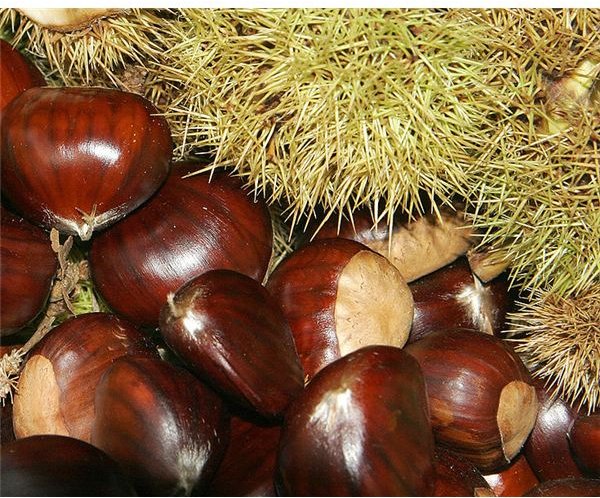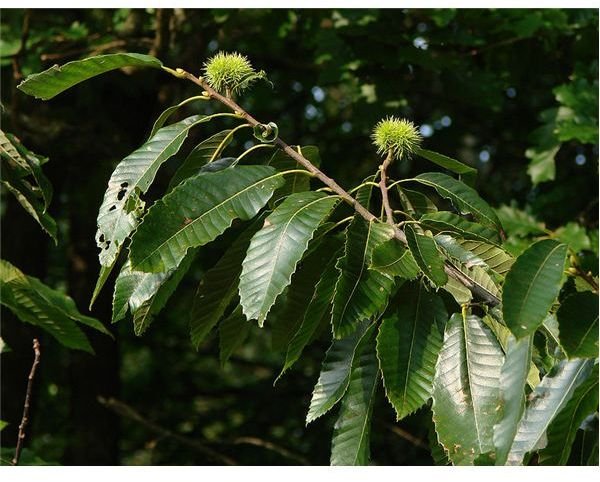About the Sweet Chestnut Tree (Castanea sativa Mill): Growing in Warmer Climates These Trees Produce Edible Chestnuts
Distribution and Cultivation.
Sweet Chestnut trees are native in temperate parts of Africa, Asia and Europe. The trees are thick with foliage and have large leaves. Full grown, the trees reach about 114 feet tall. Moderately warm sunny weather and well drained soil provides the optimum growing conditions for Sweet Chestnut trees. The trees can survive in less than optimum climate and soil conditions. Older leaves on the trees can endure cold weather, but young leaves cannot.The trees prefer lower acidic soil but can do well in very acidic sandy soil that contains little fertilization. Warm dry summers are the most desirable for nut growth. A Sweet Chestnut tree grown from a seedling takes about 20 years to bear nuts.
Food Uses
The nuts of the Sweet Chestnut Trees are edible. When skinned and roasted, they make a tasty food that can be used

in a variety of ways. The nuts can be eaten alone or added to meal and dessert recipes. The nuts can also be dried and ground. The ground nuts can be used as a flour or as a thickener for other foods. Sugar can be extracted from the nuts to make a sugar alternative sweetener. Sweet Chestnuts are sometimes used to make a coffee alternative or a beer.
Medicinal Uses
The bark, leaves and the nuts from the Sweet Chestnut trees are sometimes used in natural and homeopathic medicine to treat despair, diarrhea, muscle pain and whooping cough. A natural shampoo can be made using the bark, leaves and nuts to sooth the scalp and to add golden highlights to the hair.
Wood
Wood from the Sweet Chestnut tree is used for building materials. Particularly wood from young trees because it stands up well to indoor and outdoor use. Wood from older trees are drier and brittle and does not fare as well for outdoor use. A wood harvesting method called copicing works by regularly cutting young branches off the tree. The cut branches are made available for building without killing the tree. As new branches grow, they are cut off and used for building.
Wood from the Sweet Chestnut tree burns well and makes an excellent heating fuel.
Scientific Classification
Scientific Name: Castanea sativa Mill.
Kingdom: Plantae
Division: Magnoliophyta
Class: Magnoliopsida
Order: Fagales
Family: Fagaceae
Genus: Castanea Mill.
